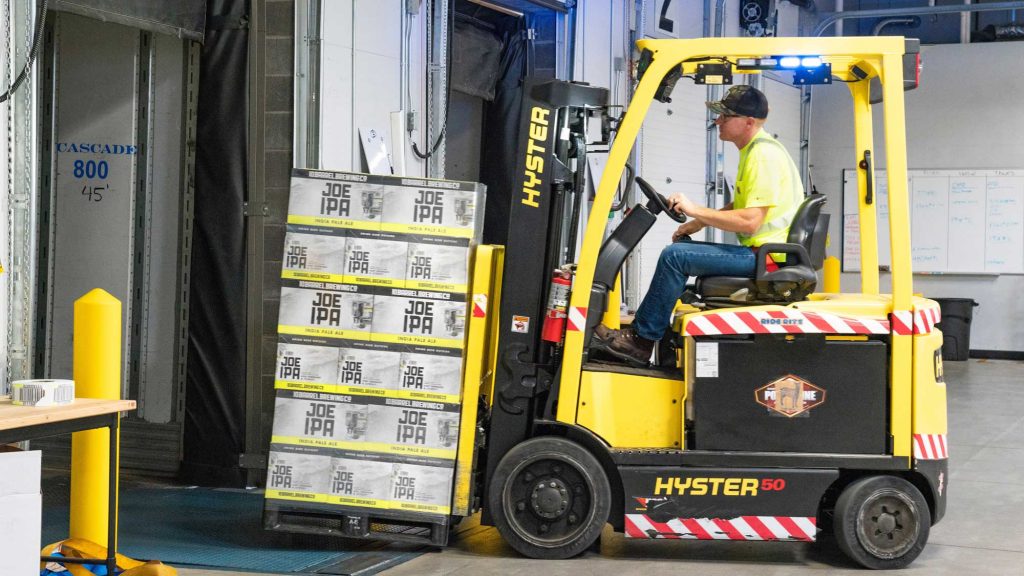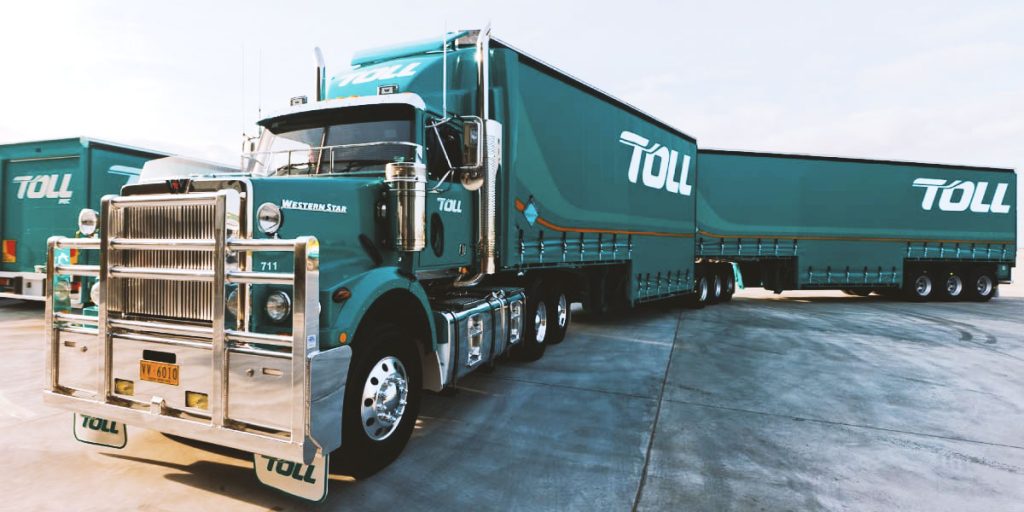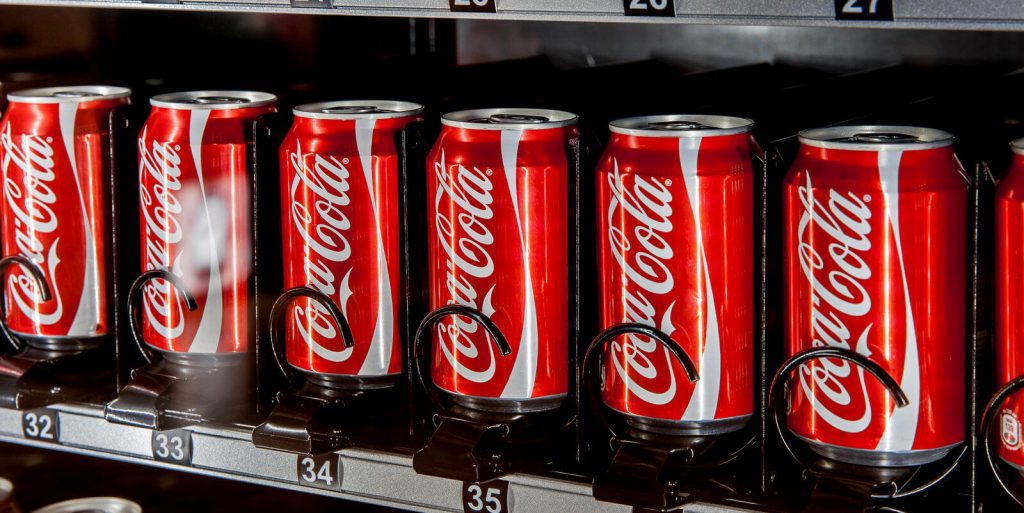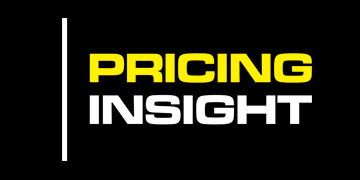Hyster-Yale Materials Handling Asia Pacific [Forklifts] is part of Fortune 500 company NMHG. Hyster-Yale AP was turning over $100 million a year and losing about $100,000 in EBIT per year. The reason they were unprofitable was, simply, they were selling forklifts below cost. They had sales reps who were able to offer discounts at will and the business was without controls or a plan to manage pricing strategy.
Sales reps were often trying to sell forklifts to the wrong customer segments and ended expending a lot of time and resources trying to convert customers who were only interested in the lowest price and a transactional sale.
Often, the sales reps were trying to make their budget each month so they often undertook more aggressive discounting just to get the sale. This worked in their favour, but not the company’s because they were incentivised on volume not profitability.
The other aspect was that they didn’t understand the value that each forklift represented to the customer. As an example, they were selling these special warehouse reach stacker forklifts which move between the aisles of a large warehouse. If you think about a warehouse moving 1000s of boxes each day at places like Bunnings or Harvey Norman, it is a sophisticated operation and requires a sophisticated piece of machinery and a certain level of skill to operate them.
Reach stackers are premium products and customers need a supplier who can service these machines when they break down because the cost to the customer when those machines are not working is very high. They get lost productivity and incur large expenses in hiring replacement machinery at short notice. The companies that need these machines, like Harvey Norman and Bunnings, are moving so many pallets of stock that even an hour of lost downtime can be worth tens of thousands of dollars.
Unfortunately, the sales reps didn’t understand the opportunity cost of the customer losing money due to downtime. The reps would negotiate deals based on what the competitors claimed prices were without thinking through or understanding what the competitor’s total offer was able to service or the backup or reliability of that machine.
The situation was a mixture of discounting freely and customers doing very aggressive negotiations at a very transactional level.
There wasn’t much support or decision analytics for the sales reps to make more sophisticated decisions around the 2,500 forklifts being sold every year. What we saw was a very complex matrix of markets, customers and products without effective use of data analytics underpinned by a value-based pricing strategy.
The business model is very similar to a car dealership network. In a dealership you make money in a couple of different ways:
- The first way is you make money from short-term rental hire so you’re effectively like a mini Coates hire or Kennards. When you rent out a forklift for a couple of days on short-term basis and without notice, you can charge very high prices and make very profitable sales with this kind of demand.
- The second way to make money is by service and spare parts. Forklifts are hardworking machines that wear out. They need to be regularly serviced and use consumables such as spark plugs and oil filters which need to be replaced at every service. Occasionally you will have to replace a structural item such as an axle and this is a source of great profit.
One of the reasons there was so much focus on discounting was that the sales reps thought that if they could get the forklift into the marketplace, it would start wearing out and thereby create an installed base which would create great demand for parts and service. In this scenario, service and parts demand is generated and money is made by the dealership, but the original equipment manufacturer doesn’t get the benefit.
So we had to find a way to make the original equipment manufacturer profitable but still support the dealership network with sustainable business model economics.
The dealership profitability model is designed such that they do not need to make too much profit from selling new units. There is a natural conflict between dealers and original equipment manufacturers.
Dealers would prefer to sell second-hand equipment as the margins are between 25-40%, whereas for new units the margins are usually sub 10%. In many instances, we saw dealerships simply not selling new units or only selling the easy high volume units such as the industry standard 1.5 – 2.5 Tonne capacity combustion engine forklift.
Analysing the Sales
We started analysing the sales of all units on an individual basis. This included evaluation of sales by primary units of measure – revenues, units, average sell prices and margins. We looked at growth at on year, growth trends and broke these sales metrics down across geographies and dealerships.
We looked at our classic analytics like the Pareto principle – what were the big sellers down to the small sellers, what proportion of forklifts made up 80% to 90% of revenues? We then looked at why we were making sales of certain models and not others. We then also looked to dealer performance in detail to understand the different mix of business that was being achieved by a dealer. This was really interesting because what we found was that sales performance was heavily dealer dependent, not product or price dependent.
In New Zealand, for example, the dealer was a Caterpillar trained dealership. Caterpillar is a global leader in best practice heavy equipment marketing and sales. What we found was that they were able to sell forklifts at 50% more profitability than their equivalent counterparts in Australia. The dealership in Australia by contrast, had no clear sales and marketing methodology supporting a highly targeted customer segmentation strategy. It was reactive and chasing leads left and right with limited success.
Now, what did you expect the Sydney dealer to cite as the constant issue in not making sales? Yes, price. The product was always too expensive. The reality was that this dealership’s sale strategy focused on price buyers only as they were not a credible supplier for a sophisticated buyer with a complex application. Their proposals never got past the first cut. B grade salespeople always manage to find C-grade customers.
The implication here? Be absolutely sure that price is the issue by eliminating the other variables that drive value first. Too many price discount decisions get made without appropriate validation of the situation.
Finding Pricing Power
What we also discovered was that the heavier capacity forklifts had substantially more pricing power than the lower capacity forklifts. In particular, the five tonne to seven tonne capacity forklifts had substantial pricing power. The reason that they had this pricing power was their role in fairly dangerous industries like timber and steel where forklifts needed to perform at a high level. In fact, that’s what we’ve discovered is the source of pricing power for many businesses. Risk management.
The cost of risk is the reason why a seven-tonne forklift can command high margins and price. Customers are not prepared to take the risk on a piece of equipment that may be inferior or cheaper but exposes them or their business to physical or economic loss such as that caused by workplace injury.
A Strict Set of Pricing Guidelines
What we did to prevent further margin erosion and profit loss was we instilled a strict set of discounting guidelines and controls.
At the outset, it was a single dealing desk where all forklift sales came across the pricing manager’s desk. These were analysed across a series of criteria – competitors, customer type, finance, terms of the lease. We then started identifying the forklifts by individual product and capacity where we thought we had more pricing power and we started to limit the discounts on those particular products.
There were other products that had limited pricing power that we were prepared to discount if we could pick up volume. These tactics gave the dealers the installed base to drive service and aftermarket spare parts revenues from customers. This was the balancing act between margin volume and pricing strategy through the channel.
Other initiatives that we put in place were financial pricing models to allow us to analyse the profitability of every forklift we sold with the various accessories or configurations that customers required or the extra safety gear or specialised handling equipment such as paper rolls or steel handling equipment.
In the past, these various accessories had often been mispriced so they would sell forklifts and make money on the basic unit but would lose money on the attachment.
Electronic Pricelist
Another thing we implemented was an electronic pricelist. Previously, they used to have price lists that would be sent out from the United States in hard copy and these prices were manually keyed into an Access database line by line, character by character. There were lots of errors in the data with this manual approach.
There was definitely a need to take advantage of technology to minimise pricelist errors and streamline pricing management operations.
We were able to create a very effective configuration tool using EXCEL as the platform.
We made contact with the IT departments in the USA, Japan, Italy and Netherlands to obtain access to product and pricing information electronically. We were able to then upload files into the EXCEL platform to create a practical and portable pricing quote tool. The pricing quote tool allowed dealers to quickly create quote for customers, calculate lease payments and also send the quote build to the factory to place an order.
This toolset was then emailed to all the dealers around the world and they could then order with confidence. Order accuracy increased. Accuracy in margin analysis increased and so we had an agreed process and system for making faster, more accurate pricing decisions.
Control of Aftermarket Prices
There were other initiatives we introduced such as control over the aftermarket prices. Previously this had been beholden to the product managers and parts interpreters. The parts interpreters were essentially order takers who helped customers to order the correct part number. They sat in front of a green screen and could see all the parts details, including the cost and sell price. The customers quickly realised the interpreter staff could see the costs. They began to pressure the staff to provide discounts for every part order. The result was margins in decline across all spare part categories – competitive, generic parts, consumables such as oil filters and capital parts such as axles.
By taking control of this situation we were able to restore margin stability and create margin expansion without loss of volume. We restricted discounts and ability to see costs. This is key advice for anyone looking to improve margins. Restrict access to costs and create strict controls around discounts.
Summary
In summary to give readers some takeaways from this case study:
- Know the drivers of value for each of your products – often the source of your pricing power comes from unlikely sources.
- Create a clear pricing strategy – you must pick a position that is aligned to the problem you solve for the customer segments your serve. Once these are aligned you have a pricing strategy.
- When developing your customer agreements, make sure you take into account the role of each player in the channel e.g. the OEM vs. the dealer
- Get aligned with your teams on the role of price in making sales and how price should be managed. This means workshopping ideas with sales, marketing, finance and operations.
- Develop a centralised pricing team and resources to manage prices.
- Develop a sales and negotiation playbook and tactics menu to support the sales team’s ability to make more profitable deals.
- Analytics – undertake detailed line by line analysis of every product or service. Evaluate the growth, margins and trends.
- Build toolsets and take advantage of the systems capability to eliminate the human error and accelerate communication decision making.
- Pricing architecture – look to develop a price position for each product and identify the role for each product. This could be a good, better, best structure or leveraging sales to capitalise on an installed base or identifying the margin opportunities that can be derived from various after-market products such as captured parts.






